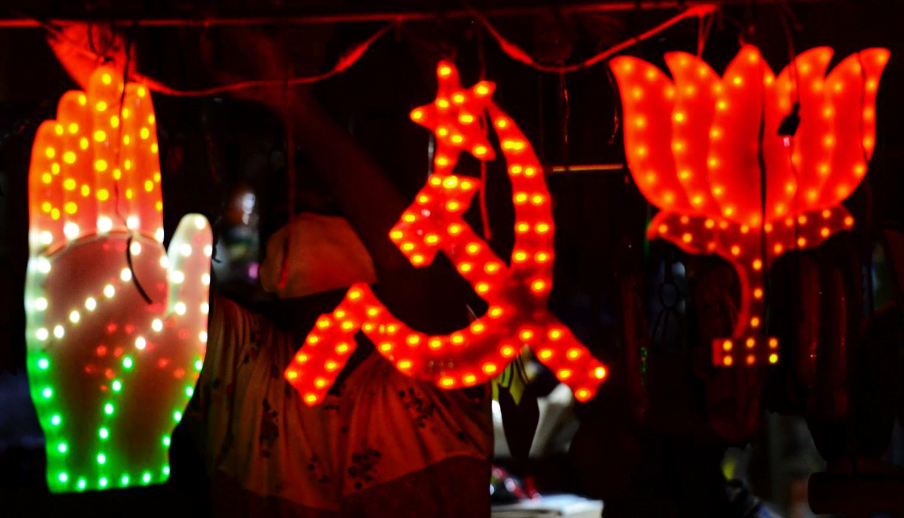India’s vibrant political scene is characterized by a colorful display of party symbols, each representing a unique identity and vision for the country. As we approach the 2024 general elections, understanding the significance of these symbols and their impact on voters is crucial.
The Importance of Party Symbols
Party symbols serve as an identifier for voters, especially in a diverse country like India, where literacy levels and language barriers may present challenges. Symbols are a way for political parties to communicate their brand and values to the electorate. For many voters, these symbols are as important as the candidates themselves.
Historical Overview of Party Symbols
The tradition of using party symbols dates back to the first general elections in 1951. The Election Commission of India introduced symbols to help voters easily identify the party or candidate they wished to support. Over the years, these symbols have become an integral part of the election process and are often associated with specific parties’ legacies and ideologies.
How the Election Commission Allots Party Symbols
The Election Commission plays a vital role in 2024 General Elections allocating symbols to parties and candidates. Since 1968, the Election Symbols (Reservation and Allotment) Order has regulated the distribution of symbols at the national and state levels. This ensures a fair and organized election process.
The Symbol Allotment Process
5.1 Understanding Party Recognition
The Election Commission categorizes parties as national, state, or unrecognized based on their performance in elections. Recognized parties have reserved symbols, while unrecognized parties receive free symbols.
5.2 The Role of National and State Parties
National parties receive consistent symbols 2024 General Elections across the country, whereas state parties receive symbols within their respective states. This helps maintain party identity across regions.
5.3 Allotment to Independent Candidates
Independent candidates are assigned 2024 General Elections free symbols that are not reserved for any party. This allows them to stand out on the ballot and be recognized by voters.
Notable Party Symbols and Their Meanings
6.1 Telugu Desam Party (TDP): Bicycle
The Telugu Desam Party uses the bicycle as its symbol, representing progress and connectivity. This symbol resonates with its base in Andhra Pradesh and Telangana.
6.2 Azad Samaj Party (Kanshi Ram): Kettle
The Azad Samaj Party uses the kettle as its symbol, signifying inclusivity and unity among various social groups. This symbol is prominent in the northern parts of India.
Creative Uses of Party Symbols
Party symbols are not just limited to campaign posters or election booths; they extend to creative displays at rallies, events, and social media. 2024 General Elections Supporters often engage in innovative ways to showcase their allegiance to a party, from parades featuring large models of party symbols to catchy slogans centered around them.
The Role of Party Symbols in the 2024 General Elections
As the 2024 general elections 2024 General Elections approach, party symbols play a pivotal role in shaping the political landscape. Parties leverage their symbols to differentiate themselves from opponents and create a strong emotional connection with voters. These symbols often evoke a sense of trust and familiarity, influencing voters’ choices.
Why Do Party Symbols Matter?
Party symbols matter because they simplify the 2024 General Elections decision-making process for voters. They serve as a visual shortcut, helping people identify the party’s values and track record. In a complex political landscape, symbols provide clarity and continuity.
Changes in Party Symbols Over Time
Party symbols have evolved over the years, reflecting changes in political ideologies and party priorities. Some parties have opted for modern symbols to appeal to younger voters, while others retain traditional symbols to maintain their established identity.
Challenges and Controversies with Party Symbols
While party symbols are meant to provide clarity, disputes can arise over symbol allocation. Conflicts between parties with similar symbols or candidates using unauthorized symbols can lead to confusion and legal challenges.
Legacy and Impact of Party Symbols
Party symbols have a lasting impact on India’s political culture. They serve as a bridge between parties and voters, creating a sense of belonging and loyalty. The legacy of these symbols continues to shape the country’s democratic process.
How Party Symbols Shape Voter Perception
Party symbols play a crucial role in shaping voter perception and behavior. Voters often associate symbols with the party’s stance on key issues, influencing their choices at the polls. A well-chosen symbol can elevate a party’s image and attract new supporters.
Conclusion
As the 2024 general elections draw near, understanding the legacy and significance of party symbols is essential. These symbols have a profound impact on the political landscape, guiding voters and shaping the future of India’s democracy.
PM Modi’s Rally Blitz and SC’s VVPAT Verdict Shake Political Landscape
Frequently Asked Questions (FAQs)
- What is the role of the Election Commission in allocating party symbols?
- The Election Commission regulates the allocation of party symbols to ensure fairness and organization in the election process.
- How are party symbols chosen for national and state parties?
- National parties receive consistent symbols across the country, while state parties receive symbols within their respective states.
- Why do party symbols matter in elections?
- Party symbols simplify the decision-making process for voters, providing a visual shortcut to identify the party’s values and track record.
- How have party symbols changed over time?
- Party symbols have evolved to reflect changes in political ideologies and party priorities, with some opting for modern symbols while others retain traditional ones.
- What impact do party symbols have on voter perception?
- Party symbols shape voter perception and behavior, often associating them with the party’s stance on key issues and influencing their choices at the polls.
